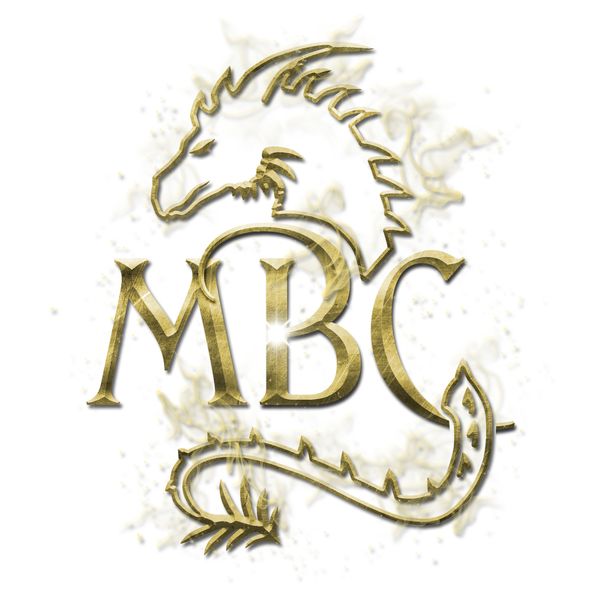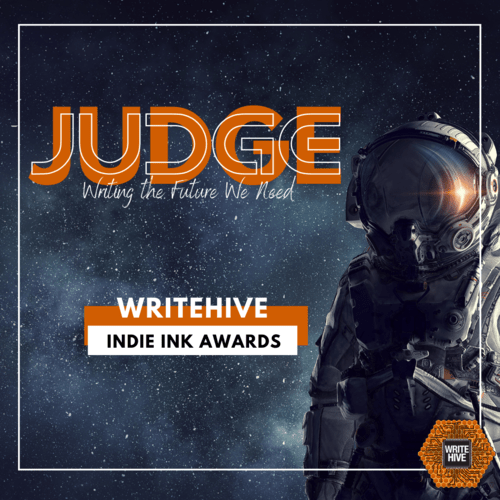.jpg)
Last Updated on 23/02/2024 11:48:56

Guest Post: About the Metaframe War Series – Origins, Evolution and Predictions
Posted on15/01/2024 08:54:26Guest Post: About the Metaframe War Series – Origins, Evolution and Predictions
Since I have recently read and absolutely loved The Metaframe War Series by Graeme Rodaughan, I was curious to know a little bit more about Graeme's work behind the scenes. How did he come up with the idea for the series, how did he start writing and how did the ideas evolved? So I went ahead and asked him if he could talk to us a little bit about his writing process, the ups and downs that he had to face along his journey, as well as his expectations and future plans.
And he was kind enough to take time out of his busy schedule to reply. And not just a simple little answer folks! A great in depth answer that I am posting over here as a Guest Post.
Thank you Graeme!
How did the Metaframe War series come into existence?
It began with a love of story and a desire to read a story I would be immersed in. I also wanted to write a story, to share my passion for stories with readers and give them the immersive experience I value so much.
I'm in love with high-octane, action packed, thrilling stories with epic heroes and mighty villains. I want suspense, I want characters with depth who I really care what happens to them, and who I will both love and hate. I love fantasy and science fiction and I want both in the same story. I want pace, and more pace, and yet time for emotional intimacy and heart-rending scenes.
My goal in writing the Metaframe War series is capture all the above and share it. To achieve that goal I progressed as follows.
Essence: All meaningful conflict occurs within a relationship.
You have to start somewhere, and it all began with a relationship. Specifically a relationship between a powerful older woman and a younger man (Cougar alert?). The essence of the relationship is one of manipulation and abuse where the older woman would manipulate the younger man into completing a task that she herself could not do. The challenge for the young man was to identify what is happening and either avoid being used, or subvert it.
Essence: There must be a larger context in which the conflict occurs.
I toyed with the idea of creating a fantasy world to situate the story in. As a purely practical measure I gave that idea up and chose to situate the story in our modern world plus 5 - 10 years from now, for the simple reason that creating a believable fantasy world from scratch is a substantial piece of work and I didn't have the time to devote to such a task.
Essence: What is the metaphor for Power
The primary source of conflict within the Metaframe War is the pursuit of power by various characters. Power itself is captured in the metaphor of the Metaframe, aka the Divine Engine of Thoth, which allows an adept to literally change the rules of the game (Universe). The Metaframe plays a similar role in my story that the One Ring plays in the LoTRs.
Essence: A tournament structure provides automatic escalation of conflict and stakes.
I didn't want to have a single pair of opposing entities, such as the Jedi vs the Sith. I wanted to reflect a genuine multi-polar conflict (which is how I see our current geopolitical environment).
I toyed with the idea of having eight or more distinct organisations vying with each other for possession of the Metaframe artefacts, and as the story progressed, they would win, or get eliminated from the contest. Think Game of Thrones or Highlander.
I settled on three, the Order of Thoth, the Red Empire, and the Vampire Dominion in a stable cold war environment - and then the stability breaks down and the situation becomes very fluid.
The beauty of having three competing groups is that I'm never at a loss for someone to "oppose" someone else.
I established all of the above, working with large sheets of paper, a pencil and brainstorming - let's call that phase "Concept Development."
With the concept in hand, I still didn't have a story - that came next. Still working with large sheets of paper and pencil. I would block out four sections on a sheet as follows.
1. Inciting Incident (-ve)
2. First Reversal (+ve)
3. Second Reversal (-ve)
4. Crisis/Climax/Resolution (+ve)
And then I would work with that, how did the story start, how did it progress, and how did it end. I worked on this for two to three months, multiple iterations, throwing things out until I was happy with the final result.
I had iterations where Anton was a US special forces soldier in Afghanistan who's unit gets killed by vampires, but he is saved (against her orders) by Chloe Armitage - and the rest of the story occurs with Anton as a vampire. (of course that story ended up in the waste paper basket...).
I had an iteration where there was a cult of purely female ninjas, but they didn't make it through either. (Although something of their essence flowed into the characters of Li Wu, and Chiara Romano)
There were a lot of options that were considered, tried, found wanting and then discarded.
And how did I know if the story was ready? I would know once I was getting shivers from what I was writing. If the author doesn’t have a visceral reaction to their own story, you can guarantee the reader won’t either. Plus, writing something like this consumes a huge amount of time, if I didn’t have a passion for the story, there would no way I could carry through to completion.
Eventually I had my four elements defined, and I had a story that I could take forward - let's call that phase "Story Development."
Next step was to structure this into a book along the lines of
ACT 1: Inciting incident to first reversal. I.e. The first act starts badly for the Main Character (MC), but ends on a positive note. (Think Luke Skywalker's Aunt and Uncle are murdered, and then he blows up the death star.)
Act 2: Proceed directly to the second reversal (negative note), do not pass go, do not collect $200. The MC is in the deep proverbial. (Think Luke has his hand cut off by his father and Han Solo is frozen in carbonite.)
Act 3: Proceed to the Crisis/Climax/Resolution (positive note) The MC confronts their Nemesis and either decisively wins through or is defeated. All story arcs get resolved. (Emperor Dead, Darth redeemed. Empire Defeated).
(Note to my readers, please don't think that I have simply given away the ending to my series and that Anton is sure to win and Chloe is sure to lose - life is not that simple. Let me ask you this before we go on. Who won at the end of A Subtle Agency? Who was best placed to pursue their agenda? Was it Chloe or Anton? If you think that they both lost and gained - you would be right. It is my aim to ensure that you do not know until the end what will happen and how the essential conflict between Anton and Chloe is finally resolved.)
So I ended up with three nicely defined and summarised "Acts" for one Novel. I looked at it, rubbed my chin and said, "You know what, there's easily enough material to make three books, let's just tell the story with a trilogy."
I was still working with paper at this point, and I got three large sheets and blocked each sheet in three sections. Each of my initial three Acts had morphed into a book, and each book would have three acts.
Like so,
Book 1: (Act 1 ends +ve, Act 2 ends -ve, Act 3 ends +ve hence Book 1 ends +ve).
Book 2: (Act 4 ends -ve, Act 5 ends +ve, Act 6 ends -ve hence Book 2 ends -ve) Book 3: (Act 7 ends +ve, Act 8 ends -ve, Act 9 ends +ve hence
Book 3 ends +ve, hence story ends +ve).
Ok, So I had a trilogy that was structured like Star Wars (new hope) through to Return of the Jedi, and there is nothing wrong with that, besides which I was telling a very different story, wasn't I? (Hang on a second, they're both Modern Epics where the individual is pitted against a corrupt authority and a rag tag group of rebels defeat a great power...).
So I completed the definition of the nine acts. I had quite a bit of material by then and the basis of what seemed to be a pretty good story, and working with pencil and paper was becoming cumbersome - I needed a tool with which to take my story forward to the next stage.
I got Scrivener
This tool was and remains perfect for what I'm doing. I transferred my paper scribblings into the tool and my story rapidly took shape.
For each of my nine acts I created and defined 7, 9 or 11 chapters each with a solid paragraph of text describing what happened in each chapter.
I started to define my characters in detail, and other objects such as the Metaframe, Vampirism, and the Ramp became fully defined.
So now I had 3 books, 9 acts, and about 80 chapters and I'm looking at it and I realised that there was too much story to fit into that format so I cut books 1 and 2 apart and added in two new books.
So now I had 5 books, 15 acts, and about 145 chapters, all defined. Let's call that phase "Preliminary Design," and it took about 6 months to complete
I then started designing the individual scenes for all the chapters in Book 1, the last three chapters in Book 4 (the original 2nd Reversal) and the final chapter of book 5 (the original crisis/climax/resolution). Let's call that phase "Detailed Design (not completed)" Which took another 6 months.
So with all the scenes in Book 1 defined, all I needed to do was actually write them. I wrote the first act of book 1, came in at approx. 86,000 words, 208 pages, that took about 7 months working about 15 hours per week.
I looked at it, and decided it was big enough to publish in its own right.
Act one is "A Subtle Agency."
Act two became "A Traitor's War."
Act three became “The Dragon’s Den.”
Act four became “The Day Guard.”
Acts five and six have been consolidated into “The Crane War.”
Acts seven through nine have been consolidated to (working title) “The Red Ghost.”
A new book, (working title) “The Enforcer,” has been added as an extended prologue for book number eight.
Acts ten through twelve have been consolidated into book number eight.
Acts thirteen through fifteen constitute the final volume that resolves all outstanding narrative threads and brings the series to a comprehensive conclusion.

About the Author: Graeme Rodaughan
was born in: Maffra Australia
writes: Thriller, Suspense, Fantasy
influences: Roger Zelazny, Tom Clancy, Mathew Reilly
I have one rule: Deliver an immersive reading experience that will transport you from the everyday world into a realm of fantastic imagination - and leave you there until you're forced to come up for air...
I'm in love with high-octane, action packed, thrilling stories with epic heroes and mighty villains. I want suspense, I want characters with depth who I really care what happens to them, and who I will both love and hate. I love fantasy and science fiction and I want both in the same story. I want pace, and more pace, and yet time for emotional intimacy and heart-rending scenes.
This is what I dedicate myself to writing - and why - because I love it.

Follow via Email
Enter your email address to follow this blog and receive notifications of new posts by email
Join other followers






